
Understanding the interactions of aerosols (such as dust aerosols, smoke aerosols, and other carbonaceous aerosols) and their unique impacts on the regional and global climate
Aerosol-climate interactions, aerosol-meteorology interactions, atmospheric physics, air-quality, and aerosol-health impacts.

Computational biology of gene expression systems, including:

Evolution of bacteria
Predicting the evolution of antibiotic resistance
Testing evolutionary theory

Associate Teaching Professor, Molecular & Cell Biology

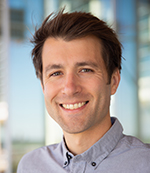
Associate Professor, Life and Environmental Sciences and Associate Dean for Academic Programs

Professor Berhe's research is broadly focused on soil science and global change science. The main goal of her research is to understand the effect of changing environmental conditions on vital soil processes, most importantly the cycling and fate of essential elements in the critical zone. She studies soil processes in systems experiencing natural and/or anthropogenic perturbation in order to understand fundamental principles governed by geomorphology, and contemporary modifications introduced by changes in land use and climate.
Professor Berhe's general research themes are:


Professor Blanchette is an applied mathematician primarily interested in problems involving fluid dynamics. A large portion of his research is concerned with problems related to sedimentation. The accumulation patterns, erosion potential and transport properties of such systems are of geophysical and environmental interest. He also studies systems where two immiscible fluids are present and surface tension plays a significant role, such as drops, bubbles and micro-fluidic devices. Professor Blanchette's approach is mostly theoretical and numerical, and he also values interactions with experimentalists so as to paint as complete a picture as possible of a given physical system.

Ecological and evolutionary responses to past, recent and future environmental change, using approaches such as:
-paleoecology
-niche/community modeling
-phylogenetics/phylochronology

Raymond Chiao is a professor jointly in the UC Merced schools of Natural Sciences and Engineering. Previously, he was a professor for 38 years at UC Berkeley, where he earned international acclaim (including the Willis E. Lamb Medal and the Einstein Prize for Laser Science) studying nonlinear and quantum optics. At UC Merced, is pursuing a new line of groundbreaking research on gravitational radiation.

Theoretical atomic and molecular physics.
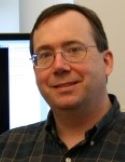
Professor, Chemistry & Biochemistry and Interim Director, Dept of Medical Education
The past century has seen tremendous progress in determining the biochemical and biophysical processes that constitute life. One exciting consequence of this understanding is the possibility of developing mathematical models of biological function that are accurate and even predictive.
Professor Colvin's research uses a wide range of simulation methods to model biological systems at different levels. Much of his research uses molecular modeling to study biochemical problems, with a particular emphasis on modeling the activity of DNA-binding food mutagens and anticancer drugs. These methods involve computing the structures and energetics of biomolecules using either quantum or classical mechanics, and often require the use of supercomputers.
Other molecular modeling projects include studying:
More recently, his research interests have expanded to include simulations of biophysical and cellular processes using equations that describe the system as continuous (and sometime stochastic) dynamical systems. These projects include:
These projects offer a wide range of research projects for students interested in the application of mathematics and computers to understand the living world.

Millions of species demonstrate that evolution happens, but few illuminate the process. Professor Dawson's lab focuses on elucidating the origins, maintenance, and loss of marine biodiversity, from molecular to ecosystem levels. His specific interests are:
His lab's work scales from micro- to macro-evolution and integrates biological and physical sciences. Topic areas include:
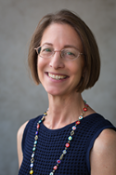
Professor, Life and Environmental Sciences and Executive Vice Chancellor & Provost

Assistant Teaching Professor, Life and Environmental Sciences

Professor, Chemistry and Biochemistry and Interim Dean
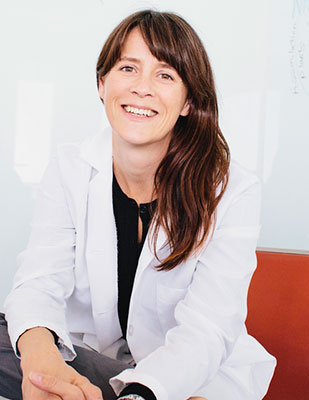
The Plant Microbiome, including:

Professor Ghezzehei's research interest is in the movement and transformation of mass and energy in porous media at a fundamental level, as well as their application to environmental- and energy-related problems. The scale of his interest ranges from sub-pore scale dynamics of water-gas interfaces to water flow and solute transport at scales of tens of meters. The scope of his research includes laboratory and field experiments, theory, and computational modeling.

Professor Ghosh's research interests span traditional topics in condensed matter physics such as correlated magnetic phases and coupled quantum systems, as well as emerging multi-disciplinary themes such as hybrid solar cells and plasmonics-based opto-electronic devices. Her group focuses on the physics of new materials and using ultra-fast time resolved spectroscopy, develops techniques and protocols to manipulate their properties for applications in energy storage and information processing devices.
The current research topics in her group include:
In addition, Professor Ghosh is also the founding faculty and advisor of UC Merced Women in Science and Engineering (WiSE@UCM).
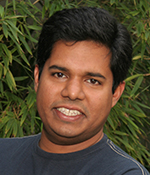
Professor Gopinathan's research focuses on a variety of problems in biophysics, soft condensed matter and the interface between the two fields. His group uses theoretical and computational techniques from different areas in soft matter and statistical mechanics including polymer physics, elasticity and anomalous transport.
The group's primary research area is Biological Transport which involves understanding how transport occurs in biological systems across different levels of organization and scale - ranging from macromolecules and vesicles being transported within the cell and across membranes to cells to communities of cells and higher animals across geographical scales. In the cellular context, the environment is structurally complex and exhibits unique dynamical properties. This results in novel types of transport phenomena and effects that in vivo systems manage to remarkably exploit. Examples include polymer transport across membrane pores, macromolecular transport through nuclear pores and motor driven intracellular transport. At higher levels, problems studied include eukaryotic cell motility, bacterial community motility and foraging in higher animals.
In addition, his group is involved in a number of other projects including drug design, colloidal dynamics, self-organization at surfaces, the geometry and dynamics of elastic sheets, transport in disordered systems and fluctuation induced forces.

The Grasis Lab researches in the following areas: viral metagenomics, systems immunology, microbiome regulation, and viral/antiviral discovery.
Publications:
Grasis JA, Lachnit T, Anton-Erxleben F, Lim YW, Schmieder R, Fraune S, et al. (2014) Species-Specific Viromes in the Ancestral Holobiont Hydra. PLoS ONE 9(10): e109952. https://doi.org/10.1371/journal.pone.0109952
Grasis JA. The Intra-Dependence of Viruses and the Holobiont. Front Immunol. 2017;8:1501. Published 2017 Nov 9. doi:10.3389/fimmu.2017.01501

Professor Hart's research explores the controls of biogeochemical processes and productivity in managed and wildland terrestrial ecosystems using methods such as:
His research group is currently investigating:

Professor Hernday's research is focused on the systems control principles and molecular mechanisms that underlie cellular decision making.
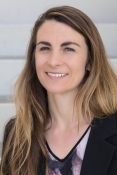
Professor Hirst's research interests focus on soft-condensed matter physics, with interests in both biophysics and liquid crystal materials. In general, her research group uses experimental techniques to characterize molecular assemblies and to understand the physics behind why they form. In a wider context, her group tries to uncover the common principles of how self-organization at a molecular level can transfer physical properties across length scales to define complex structures in real biological systems and soft phases.
Professor Hirst's group uses a wide variety of experimental techniques, with significant focus on:
Current research projects include the:
In addition to her research interests Prof. Hirst is also the creator of softmatterworld.org, a new educational networking site for the soft matter community around the world.

Immunological tolerance and autoimmune disease
Cellular and molecular interplay between lymphocytes and dendritic cells

Professor, Chemistry & Biochemistry and Vice Provost and Dean of Graduate Studies
Developments in quantum chemistry and potential energy surface exploration; computational inorganic chemistry; mechanistic study and rational design of transition metal catalysts.

Professor Ilan's research interest lies in the mathematics involved with real-world phenomena, and its application to areas such as the control of intense lasers beams and harvesting solar energy. His research uses modeling physical systems in terms of ordinary and partial differential equations. Detailed studies are obtained using functional analytic, asymptotic and perturbation analysis, and numerical computation. The over-arching goal of this research is to connect between the mathematical and physical aspects arising from these problems and make useful predictions about physical systems.

Developing and applying electronic structure theory, molecular dynamics and QM/MM methods to the modeling of:


Professor Kelley's research group uses ultrafast optical spectroscopy to examine the optical and electronic properties of semiconductor nanoparticles. He focuses on layered semiconductors - specifically gallium selenide and indium selenide - which have layered crystal structures and form two-dimensional, disk-like nanoparticles. The optical properties of indium selenide are very well suited for the absorption of sunlight; therefore, its nanoparticles hold considerable promise as the active media in photovoltaics.
Professor Kelley's group synthesizes nanoparticles that have diameters from 2 nm to tens of nanometers - all of which are four atoms thick - as the properties of such nanoparticles are strongly size dependent, due to quantum size effects. He is primarily interested controlling and optimizing the properties of the nanoparticles for solar energy conversion.

Professor Kelley's research uses the laser light scattering techniques of resonance Raman and hyper-Raman spectroscopy to study the atomic-level details of how materials interact with light. These studies reveal the detailed mechanisms of fast photochemical reactions such as those involved in human vision, photography, xerography, and solar energy conversion. Her group carries out experiments and also develops theoretical and computational tools for analyzing the data. Currently, her work focuses on using these techniques to understand how the vibrations (phonons) of semiconductor nanocrystals influence and are influenced by, absorption and emission of light in these materials.


Professor Kim is interested in interdisciplinary research problems at the interface between mathematics, science and engineering. In particular, he studies wave propagation in random media with applications to biomedical optics and wireless communications.
This research includes the study of differential and integral equations, asymptotic analysis, scientific computing and inverse problems.



The rising and setting of the sun causes dramatic oscillations in light and temperature each day. Most life forms involuntarily coordinate their lifestyles to these cyclic variations by means of an endogenous clock called the circadian clock. These circadian clocks have been identified in diverse organisms from cyanobacteria to humans, and studies suggest that the circadian clock has adaptive value.
Professor LiWang's laboratory is resolving the structural and biochemical basis of rhythmicity of the cyanobacterial circadian clock. The central oscillator of this clock is composed of only three proteins, which by themselves in a test tube with ATP generate a self-sustained circadian rhythm for several days. Their objective is to develop a comprehensive understanding of how a simple mixture of three proteins keeps time.

Professor Manilay is a developmental immunologist, with research interest in the mechanisms that control cell fate decisions in the immune system. Her current topic of study is the development of T lymphocytes, important components of immune defense against pathogens.

Assistant Professor, Molecular & Cell Biology


Evolution, phylogenetics, genomics, computational biology

Dr. Meza studies nonlinear optimization with an emphasis on methods for parallel computing. He has also worked on various scientific and engineering applications including scalable methods for nanoscience, power grid reliability, molecular conformation problems, optimal design of chemical vapor deposition furnaces, and semiconductor device modeling.



Photocatalysis of nanomaterials
Spectroscopic and mechanistic studies
Dr. Nguyen's research is focused on understanding and expanding the applications of nanoparticle photocatalyst to novel green synthesis and solar energy harvesting. These nanometer size catalysts have unique chemical reactivities that will lead to potential applications in chemical industry where chemical reactions will be driven by solar energy and hazardous wastes to the environment will be minimized.

Professor, Molecular & Cell Biology and Associate Dean for Equity, Justice & Inclusive Excellence

Professor Nobile's research is directed toward understanding the molecular and mechanistic basis of microbial communities. Her lab is interested in investigating how transcriptional networks underlie the regulation of gene expression during biofilm development. Much of this work is carried out in the species Candida albicans, the most prevalent fungal pathogen of humans. The lab is also beginning to study interspecies interactions between different fungal and bacterial species. Questions that the lab is currently pursuing include: How are microbial communities regulated? How are microbial communities built? How are their unique and specialized properties maintained? How have microbial communities evolved?
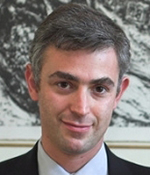

Peggy O'Day is environmental geochemist who studies the chemistry, reaction, and transport of inorganic contaminants and species, primarily metal and metalloid elements, in surface and subsurface systems. She specializes in the use of spectroscopic and microscopic methods, especially synchrotron X-ray techniques, to determine element speciation and molecular-scale mechanisms of biogeochemical reactions in natural systems and laboratory analogs. She develops and applies thermodynamic, kinetic and reactive transport models for synthesis and quantitative description of biogeochemical cycling, reactivity, transport, and bioavailability.
Current research projects include:

Professor Ortiz's research focuses on the regulation of kidney function and metabolism in a variety of animal models, including seals and dolphins, with the intent that the data will have translative value to clinical medicine. These studies are conducted in collaboration with colleagues at:
His lab - in conjunction with collaborators at Kagawa Medical University, SUNY Buffalo Medical School, and Tulane University HSC - investigate:
Professor Ortiz is also pursuing studies that address the link between diabetes and obesity with hypertension.
From an evolutionary perspective, he is interested in the physiological mechanisms marine-adapted vertebrates use to regulate water and electrolytes during a variety of altered environmental conditions, such as prolonged food deprivation or extended fresh water exposure.
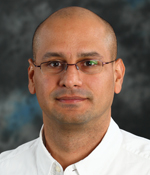


Associate Adjunct Professor, Life & Environmental Sciences

Epigenetic mechanisms of neuronal gene transcription and their role in mental health.



Professor Sharping's research involves building a fundamental understanding of - and developing technology and applications for - ultrafast laser technology. These lasers have the potential to capture extremely short snapshots in time, as well as measure frequencies with unprecedented precision and accuracy. The applications are numerous in the areas of environmental science, biotechnology and national security. The research his group pursues will result in transferable technological advances (e.g., new optical sources), which will have a broad impact in:

Developing and applying multi-scale modeling methods to understand the structure, dynamics and spectroscopy of complex condensed-phase molecular systems, such as
- novel optoelectronic materials (e.g., organic semiconductors and quantum dots)
- supercritical aqueous solutions

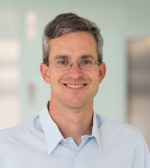
Theoretical condensed-matter physics and materials science, amorphous materials, photovoltaics, thermoelectrics, scientific code development for high-performance computing

Quantum optics and quantum coherent effects in condensed matter systems

Professor Tokman's research is focused on building mathematical models of physical phenomena and developing efficient numerical methods for problems in science and engineering. In particular, she has been developing numerical techniques, which allow fast integration of large nonlinear systems of differential equations with widely varying temporal scales. Professor Tokman has worked on modeling large scale behavior of astrophysical and laboratory plasmas, including evolution of coronal loops in the solar atmosphere and plasma configurations arising in fusion related experiments. Her research interests also include computational biology, in particular, modeling experimental manipulations of biomolecular structure of living cells.
Professor, Physics and Vice Chancellor of Research and Economic Development

The Wolf lab studies the genetic and neural circuit mechanisms for coding simple behaviors, including motivated seeking and plasticity driven by addictive drugs. We also study the regulation of DNA damage repair.
Publications:
Mef2 induction of the immediate early gene Hr38/Nr4a is terminated by Sirt1 to promote ethanol tolerance. Adhikari P, Orozco D, Randhawa H, Wolf FW. Genes Brain Behav. 2019 Mar;18(3):e12486. doi: 10.1111/gbb.12486. Epub 2018 May 28.
Satiation state-dependent dopaminergic control of foraging in Drosophila. Landayan D, Feldman DS, Wolf FW. Sci Rep. 2018 Apr 10;8(1):5777. doi: 10.1038/s41598-018-24217-1.
Perineurial Barrier Glia Physically Respond to Alcohol in an Akap200-Dependent Manner to Promote Tolerance. Parkhurst SJ, Adhikari P, Navarrete JS, Legendre A, Manansala M, Wolf FW. Cell Rep. 2018 Feb 13;22(7):1647-1656. doi: 10.1016/j.celrep.2018.01.049.

The Woo Lab is interested in how dynamic cellular processes such as cell migration and cell adhesion contribute to the formation of the gastrointestinal epithelium, using the zebrafish embryo as our model system. We are also interested in developing new tools to study in vivo cell biology.
Publications:
Woo, S, Housley, MP, Weiner, OD, and Stainier DYR (2012) Nodal signaling regulates endodermal cell motility and actin dynamics via Rac1 and Prex1. J. Cell Biol. 198(5): 941- 952.
Reade, A, Motta-Mena, LB, Gardner, KH, Stainier, DY, Weiner, OD, and Woo, S (2017) TAEL: a zebrafish-optimized optogenetic gene expression system with fine spatial and temporal control. Development. 144(2): 345-355.


Professor Ye's research is focused on developing the nanoscale surface chemistry needed to manipulate and measure biomolecules and analogous systems. The nanoscale arrangements of biomolecules, such as proteins and DNA, underlie a wide spectrum of biological functions. Yet our ability to measure and control biomolecules at the nanoscale and single molecule level remains very limited. His group is using and developing sophisticated nanoscience tools to position and measure single molecules with nanometer resolution, dynamically activate the functions of individual biomolecules on surfaces, and develop artificial analogs of biological motors. The greatly improved understanding and control of biomolecules at the nanoscale have implications in unraveling key biological functions, creating artificial functional bimolecular structures, and developing ultra-sensitive biosensors.